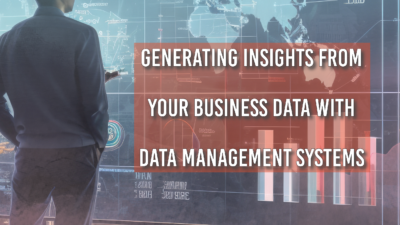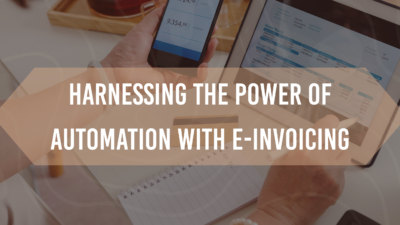6 Steps to Optimize Your Company's Workflow Strategy
6 Steps to Optimize Your Company's Workflow Strategy
Author: GDS
Developing a comprehensive workflow strategy is essential for companies who want to streamline their processes and maximize productivity. By implementing the right workflow management tools and strategies, businesses can improve communication, enhance team collaboration, and create a more efficient working environment. In this article, we outline six steps you can take to help your organization develop an effective workflow strategy.
Developing a comprehensive workflow strategy is essential for companies who want to streamline their processes and maximize productivity. By implementing the right workflow management tools and strategies, businesses can improve communication, enhance team collaboration, and create a more efficient working environment. In this article, we outline six steps you can take to help your organization develop an effective workflow strategy.
What is Workflow Management?
Workflow management is an essential tool for any business or organization, as it helps to simplify complex processes and ensure that projects are completed on time and within budget. It involves mapping out various tasks associated with a project and assigning roles to team members to bring the project from start to finish. By creating a plan of action and setting milestones along the way, workflow management helps to keep team members on track and minimize waste. Ultimately, it can help to streamline operations and maximize efficiency in any organization.
What is Workflow Management?
Workflow management is an essential tool for any business or organization, as it helps to simplify complex processes and ensure that projects are completed on time and within budget. It involves mapping out various tasks associated with a project and assigning roles to team members to bring the project from start to finish. By creating a plan of action and setting milestones along the way, workflow management helps to keep team members on track and minimize waste. Ultimately, it can help to streamline operations and maximize efficiency in any organization.
Step 1: Analyze Your Current Workflow Processes
Start by examining the current workflow process you have in place. Document each step of the process and identify any issues or bottlenecks that might be slowing down progress. This is a crucial first step to ensure that your strategy will be effective and efficient.
Step 2: Identify Potential Problems
When analyzing your existing processes, it’s important to look for potential problems that could arise down the road. This can include process delays, unclear communication between departments, and a lack of resources in certain areas. Documenting these issues now will save you time and money in the future.
Step 3: Set Clear Goals
Before you start to implement any changes, make sure to set clear goals for what your new workflow strategy should achieve. Do you want to increase efficiency, reduce waste, or improve customer satisfaction? Once you have outlined your objectives, you can begin implementing changes that are tailored specifically to them.
Step 4: Involve Your Team
An effective workflow strategy requires the input of everyone involved in the process. Make sure that all team members are aware of the changes you are making and allow them to provide feedback. This will help ensure that everyone is on board with the new process and can adjust quickly.
Step 5: Utilize Automation
Automation can be a great tool for streamlining your workflow processes. By using technology to automate certain tasks, companies can reduce manual labor and speed up processes. Make sure to consider which tasks can be automated and how automation can help with workflow optimization.
Step 6: Monitor Performance
The last step of your workflow optimization process is to monitor the performance of your new strategy. Keep track of any changes in efficiency, customer satisfaction, or other metrics that you are measuring. This will allow you to quickly identify any issues with the workflow process and take action to resolve them.
Step 1: Analyze Your Current Workflow Processes
Start by examining the current workflow process you have in place. Document each step of the process and identify any issues or bottlenecks that might be slowing down progress. This is a crucial first step to ensure that your strategy will be effective and efficient.
Step 2: Identify Potential Problems
When analyzing your existing processes, it’s important to look for potential problems that could arise down the road. This can include process delays, unclear communication between departments, and a lack of resources in certain areas. Documenting these issues now will save you time and money in the future.
Step 3: Set Clear Goals
Before you start to implement any changes, make sure to set clear goals for what your new workflow strategy should achieve. Do you want to increase efficiency, reduce waste, or improve customer satisfaction? Once you have outlined your objectives, you can begin implementing changes that are tailored specifically to them.
Step 4: Involve Your Team
An effective workflow strategy requires the input of everyone involved in the process. Make sure that all team members are aware of the changes you are making and allow them to provide feedback. This will help ensure that everyone is on board with the new process and can adjust quickly.
Step 5: Utilize Automation
Automation can be a great tool for streamlining your workflow processes. By using technology to automate certain tasks, companies can reduce manual labor and speed up processes. Make sure to consider which tasks can be automated and how automation can help with workflow optimization.
Step 6: Monitor Performance
The last step of your workflow optimization process is to monitor the performance of your new strategy. Keep track of any changes in efficiency, customer satisfaction, or other metrics that you are measuring. This will allow you to quickly identify any issues with the workflow process and take action to resolve them.
Conclusion
Workflow optimization is an essential part of success for any company. By following the steps outlined in this guide, you can ensure that your team follows an efficient process and meets its goals. From setting clear objectives to monitoring performance, optimizing your workflow strategy will help keep your business running smoothly.
By taking a proactive approach to workflow management, you can achieve your objectives more quickly and with fewer issues. With the right plan in place, you can expect increased efficiency and improved customer satisfaction. Get started today and take control of your workflow processes!
Conclusion
Workflow optimization is an essential part of success for any company. By following the steps outlined in this guide, you can ensure that your team follows an efficient process and meets its goals. From setting clear objectives to monitoring performance, optimizing your workflow strategy will help keep your business running smoothly.
By taking a proactive approach to workflow management, you can achieve your objectives more quickly and with fewer issues. With the right plan in place, you can expect increased efficiency and improved customer satisfaction. Get started today and take control of your workflow processes!
GDS ONSIGHT- A Field Service & Delivery Application
Take the first step towards optimizing your workflow today! Contact one of our experienced workflow management experts and start maximizing efficiency in your business. With their help, you can develop a plan that will take your company to the next level. Let’s get started on creating an effective workflow strategy for your team!
GDS ONSIGHT- A Field Service & Delivery Application
Take the first step towards optimizing your workflow today! Contact one of our experienced workflow management experts and start maximizing efficiency in your business. With their help, you can develop a plan that will take your company to the next level. Let’s get started on creating an effective workflow strategy for your team!
Top 10 Inventory Management Trends Revolutionizing Businesses in 2024
Author: GDS Inventory management is the unsung hero behind many...
Read MoreMastering the Language of Finance: Essential Accounts Payable Glossary Terms
Author: GDS Navigating the labyrinth of finance can feel like...
Read MoreKey Benefits of Unifying Field Service and Delivery Operations
Author: GDS Navigating the field service and delivery landscape is...
Read MoreDiscover the Power of Goal Setting for Business Success in the New Year
Discover the Power of Goal Setting for Business Success in...
Read More
















